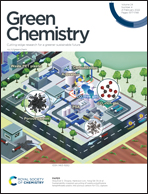Electrochemical dehydrogenative C–N coupling of hydrazones for the synthesis of 1H-indazoles†
Abstract
An electrochemical dehydrogenative C–N coupling method has been developed for the synthesis of 1H-indazoles from easily available hydrazones. Various functional groups are compatible with this metal- and oxidant-free protocol which can be carried out on a gram-scale under neutral and mild conditions. This method was applied for the efficient synthesis of anti-tumor compounds. Mechanism studies show that HFIP plays an important role in this transformation which might involve a radical pathway.



 Please wait while we load your content...
Please wait while we load your content...